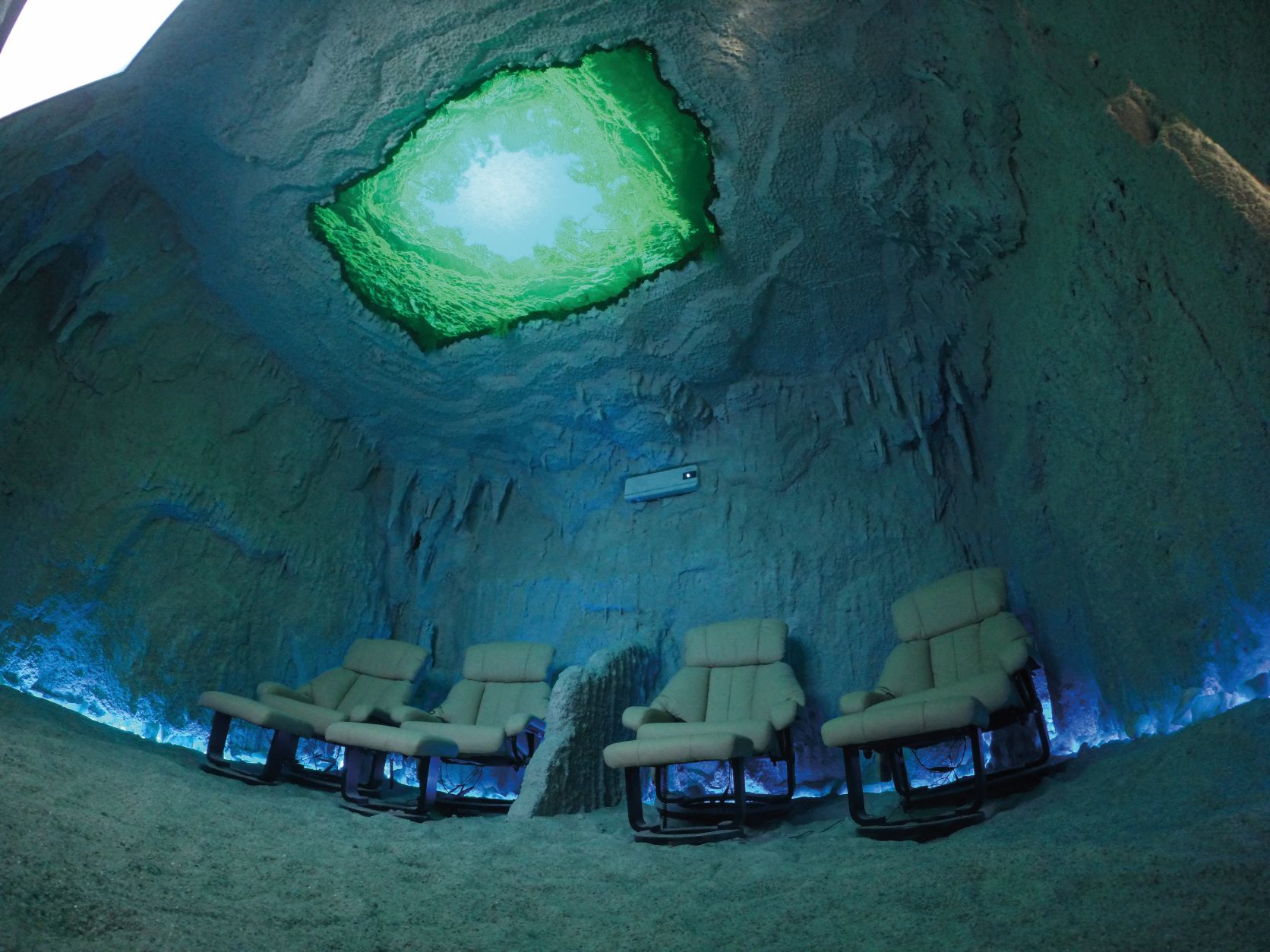Ready to immerse yourself in a salt cave and improve your health, fitness and wellbeing? Discover the benefits of salt cave therapy, a.k.a. halotherapy, for lung function, allergies and more…
The more oxygen your muscles receive the better your performance, which is why we were so interested to hear the benefits of salt caves, or halotherapy (halo is Greek for salt). Used as far back as the 12th century, the therapeutic properties of salt gained prominence in 19th century Poland, when salt miners were found to be free of the respiratory conditions other miners faced.
Fast forward to today and salt therapy is gaining interest in the research community, with increasing studies into its potential benefits for a range of respiratory conditions – especially post Covid. So far, research shows salt therapy is anti-inflammatory, anti-allergic, hydrophilic (attracts fluid) and helpful in the treatment of conditions including asthma, bronchitis and chronic obstructive pulmonary disease.
With a clear ability to improve lung function, it makes sense that athletes are using it to enhance their sporting performance. Indeed, studies by the World Halotherapy Association have shown an average 13 per cent increase in VO2 max of recreational athletes using halotherapy.
Benefits of halotherapy (salt cave therapy)
- Anti-inflammatory
- Anti-allergic (calms an oversensitive immune response to allergies)
- Aids in the treatment of conditions including asthma, bronchitis and chronic obstructive pulmonary disease.
- Increases VO2 max in recreational athletes
- Reduces mucous
- Salt absorbs allergens and toxins in respiratory tract
- Inhaling salt-laden air helps your breathe more efficiently (which aids your muscles)
- Salt aids with cell rejuvenation
- Improved wellbeing

Image via Salt Cave Halotherapy
How halotherapy works
There are several benefits of salt save therapy, or halotherapy – but how does it work? Salt reduces excessive mucous and speeds up its exit from the body. It also lowers IgE antibody levels, essentially calming an oversensitive immune response to allergies. Pure sodium chloride (aka salt) is also super absorbent. When inhaled, it attracts allergens and toxins from your respiratory tract. This enables you to expel them with the outbreath.
In essence, inhaling salt-laden air helps you breathe more efficiently – and when you breathe well, your muscles perform better. Salt is also associated with cell rejuvenation.
There are two types of halotherapy environments, taking place in specially constructed environments (it’s called speleotherapy when it takes place in underground caves). Active halotherapy – said to be more beneficial – uses a generator. This breaks salt into small particles and circulates them in the space for you to inhale. In contrast, in passive salt rooms, the walls are made of or lined with salt and the humidity and temperature is controlled (below 20°C).
Overground salt rooms can look very different. They range from a modern living room with white salt sandblasted against the ceiling and walls, to spa-like environments with loungers and beautiful glowing Himalayan salt walls, back-lit to show a range of hues from pale pink to dark red.
Halotherapy: tried & tested
WF writer Mary Comber tried a salt session at Salt Cave Halotherapy (pictured below). ‘We were instructed to recline on vibrating massage chairs and handed small, heated salt pillows to place on our chests to help reduce inflammation. For 50 minutes, we relaxed, inhaling a salt water mist while watching soothing images of nature on a screen and drifting in and out of sleep. Then, we emerged revitalised, as if we’d been walking by the sea. My breathing felt deep and easy, and I had a gentle sense of wellbeing.’
Salt Cave Halotherapy is £17 for 50-mins; visit saltcavehalotherapy.co.uk to find out more.
Words: Eve Boggenpoel | Images: Shutterstock









